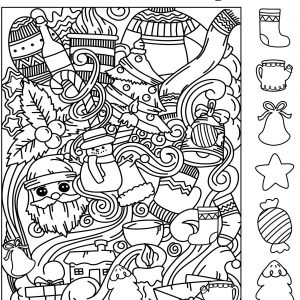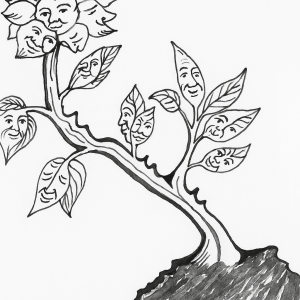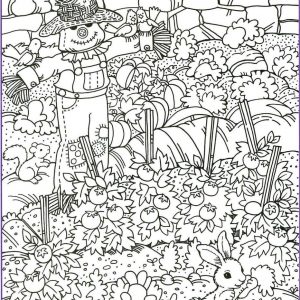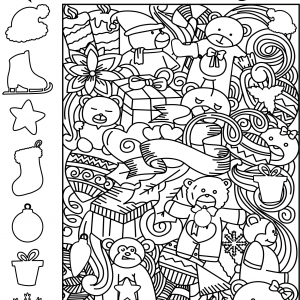Gliding Through Winter’s Wilderness: The Art of Historical Snow Travel
Introduction: Embracing the Frozen Frontier
Imagine yourself atop a blanket of pristine snow, tall evergreens cloaked in white, the crisp air filling your lungs as you press forward on wooden snowshoes and slim skis. In the image above, a hardy traveler—rifle in hand, dressed in traditional winter garb—makes his way through a snowbound forest. This scene isn’t just a picturesque moment; it encapsulates centuries of ingenuity, resilience, and the harmonious relationship between humans and snowy landscapes. Let’s unpack the rich history, the essential gear, and the time-honored techniques that made winter travel possible long before modern snowmobiles and heated cabins.
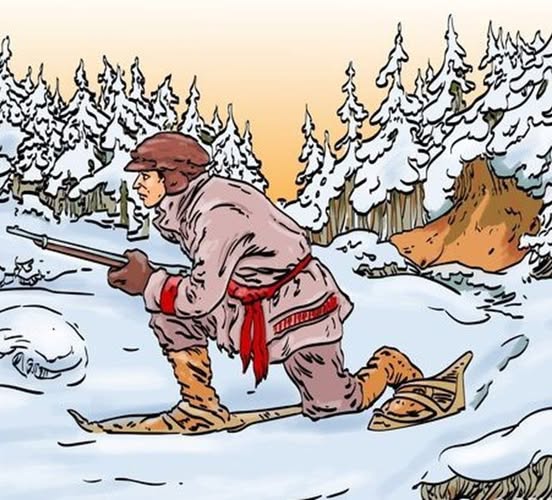
Traditional Winter Attire: A Blend of Function and Culture
Surviving and thriving in subzero temperatures demands more than bravery; it requires the right clothing. Early winter travelers layered animal hides, wool, and fur into garments that balanced warmth, mobility, and moisture management.
- Layering for Warmth
The base layer—often linen or wool—kept skin dry, while mid-layers of thick wool trapped heat. Outer garments, crafted from deer or moose hide, repelled wind and water. Each piece was custom-fitted for ease of movement, enabling our traveler to raise his rifle or adjust his snowshoes without restriction. - Cultural Embellishments
Decorative appliqués, colored trim, and beadwork weren’t merely ornamental. They signified tribal affiliations, trade relationships, and personal status within early fur-trading communities. As you notice the bright sash around our skier’s waist, you glimpse a nod to identity woven into his survival kit.
Snowshoe Technology: From Survival Tool to Sport
Snowshoes, with their wide frames and webbed interiors, distribute a person’s weight over a larger area, preventing deep sinking into soft snow. These ingenious devices evolved over millennia:
- Ancient Origins
Archaeologists trace rudimentary snowshoe use back over 6,000 years among Siberian hunters. Indigenous peoples across North America refined designs to suit varied terrains—from open plains to dense boreal forests. - Design Variations
Early frames were crafted from strong woods like ash or maple, bent into asymmetrical shapes that allowed forward propulsion. Rawhide or sinew lacing formed the net-like deck. In mountainous regions, narrower, pointed designs aided in climbing slopes, while broad, round models excelled on flat ground. - Modern Adaptations
Today’s snowshoes use lightweight aluminum frames and synthetic decking. Yet, traditional designs endure in cultural celebrations and backcountry adventures, bridging past and present.

Skiing Across the Snow: A Companion to the Snowshoe
Alongside snowshoes, simple wooden skis played a crucial role in winter exploration:
- Origins in Scandinavia
Ski artifacts date back over 4,000 years in Norway. Long, narrow planks enabled swift, gliding travel across open tundra—a technique early North American trappers adopted and adapted. - Technique and Gear
Early skis lacked modern bindings; travelers lashed their boots directly to the ski with leather straps. Poles, often tipped with metal, provided balance and propulsion. Note how our image’s traveler alternates between kneeling on one ski and planting the opposite pole to steady himself—a testament to the skill required. - From Necessity to Recreation
Once vital for survival and trade, cross-country skiing eventually evolved into a beloved winter sport, inspiring everything from recreational trails to Olympic competitions.
Hunting, Trade, and Survival: Rifles in the Snow
Carrying a rifle on snowshoes or skis wasn’t demonstrate bravado; it was essential for sourcing food and fending off threats:
- Fur Trade Era
In the 17th and 18th centuries, European and Indigenous traders established a vast network across North America, exchanging beaver pelts for metal goods. Winter journeys into remote trapping territories demanded that traders be both skilled woodsmen and adept marksmen. - Hunting Techniques
Snowshoes muffled footsteps, enabling hunters to stalk deer, elk, or small game. A well-placed shot could feed families and fuel trade, turning snow-soaked trails into lifelines of commerce. - Safety and Navigation
Traveling solo with a loaded rifle required vigilance. Hunters learned to read snow conditions, avoid hidden thin-ice traps, and understand animal trails—knowledge that passed from elders to novices around crackling fires.

Navigating the Boreal Labyrinth: Map, Compass, and Instinct
Before GPS, winter travelers relied on natural landmarks, the North Star, and simple compasses to chart their course:
- Star Navigation
On clear nights, Polaris provided a fixed northern point. Its position above the horizon changed with latitude, enabling travelers to estimate their location. - Landmarks in Whiteout
In heavy snow or drifting blizzards, familiar ridges and tree silhouettes offered fleeting guidance. Skilled woodsmen interpreted subtle differences in tree stumps or rock formations—miniature signposts buried in frost. - Oral Traditions
Route descriptions—“Follow the frozen creek for two miles, then veer east until the red pines thin”—lived in the memories of community elders. These spoken maps provided the backcountry wisdom no paper chart could fully capture.

Modern Revival: Preserving Historical Winter Skills
Today, enthusiasts and cultural groups rekindle these winter arts:
- Heritage Workshops
From First Nations cultural centers to historical reenactment societies, hands-on classes teach frame building, leather lacing, and period-accurate clothing. Participants emerge with newfound respect for ancestral ingenuity. - Backcountry Ski and Snowshoe Trails
Parks and conservancies maintain trails designed for traditional gear, complete with interpretive signage. Glide the same routes fur traders once traversed, layering your own footprints over centuries of history. - Film and Literature
Documentaries, historical novels, and multimedia exhibits bring these stories to life. They remind us that today’s winter sports are deeply rooted in lessons of survival, community, and respect for nature.
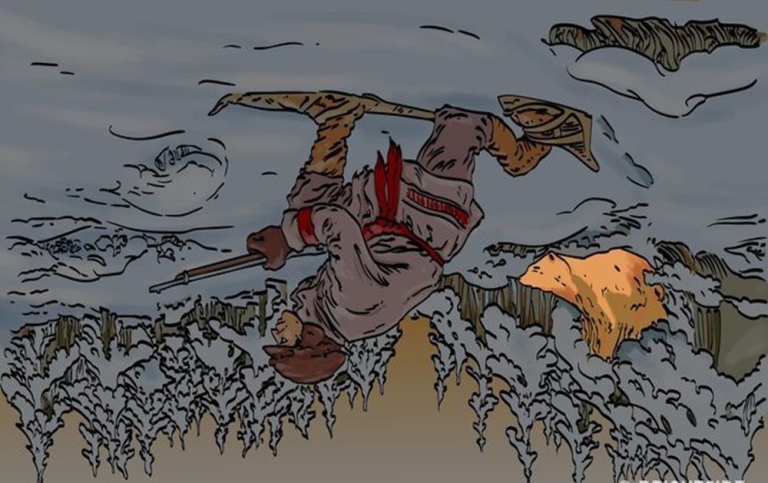
Conclusion: Honoring the Winter Wayfarers
The image of a lone traveler—rifle at the ready, balancing on wood and sinew—captures more than a snapshot of winter exploration. It embodies the spirit of human adaptability, the fusion of technology and tradition, and the profound bond between people and the natural world. As you lace up your modern snowshoes or glide across groomed ski trails, remember the ancestors who first braved these landscapes with nothing but bent wood, braided sinew, and indomitable will. By preserving and celebrating these time-honored techniques, we not only connect with our collective past but also enrich our present adventures beneath the silent snowfall.
